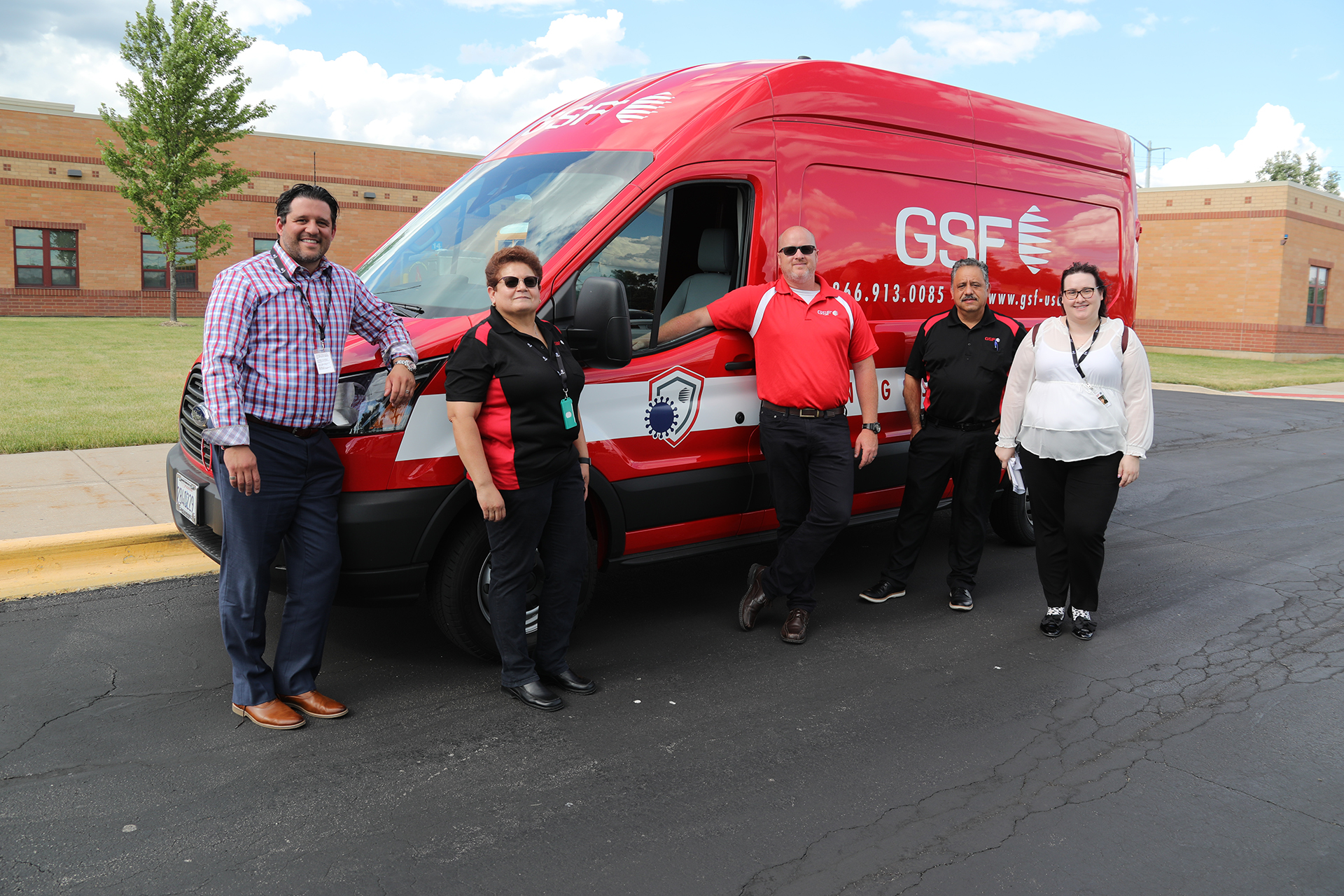From hospitals and long-term care facilities to schools, college campuses, and office buildings, custodians and building cleaners have been on the frontline of the COVID-19 pandemic ensuring all areas are cleaned and disinfected. Even before the pandemic, cleaning professionals worked tirelessly to keep facilities clean. Ensuring they have the proper personal protective equipment (PPE) or training is key to keeping them safe.
The pandemic is shining a spotlight on the important role that cleaning staff play in protecting public health and safety. It’s more important than ever to recognize the work they do and prioritize their needs. Facility managers who provide their cleaning staff with the right tools to complete their job safely and effectively will foster a loyal employee-employer relationship that minimizes turnover and increases morale.
Recognizing the Risks
When the pandemic hit, custodians and other cleaning professionals were at the highest risk of being affected by the virus due to their essential worker classification. Some custodians were expected to work long shifts without the proper PPE due to widespread shortages. In fact, the Service Employees International Union found that one in five of their members didn’t have gloves and two in five didn’t have face masks.
Expecting custodians to risk their lives by handling biohazards and caustic chemicals, and deal with strenuous and labor-intensive motions without the proper protection is unfair. We depend on cleaning professionals to keep our communities safe and it’s important that we recognize the risks they take each day just by coming to work.
Best Practices to Improve Employee Wellbeing
Consider implementing the below strategies to give in-house staff the support they deserve while reducing risk and turnover. If you work closely with a building service contractor (BSC) to support your facility’s cleaning needs, determine how well the organization lives up to these best practices.
Conduct thorough and regular training.
Training is one of the most important ways to improve your employees’ wellbeing. It should occur during the onboarding process and throughout their tenure to ensure that they are up to date with the most current procedures and information. The pandemic caused a disruption in the supply chain that resulted in many BSCs and facility managers exploring new cleaning chemical options and equipment. Custodial workers needed proper training on these products and technologies to avoid lapses in safety. Investing in education and reviewing your training program annually will result in a larger ROI, ensure consistent cleaning performance, reduce risk and improve employee retention.
Upgrade to non-toxic cleaning chemicals.
Traditional cleaning chemicals contain potentially toxic ingredients and strong fragrances that can aggravate conditions like allergies and asthma. Staff are cleaning more frequently than they were before, which is why it’s important to utilize an on-site generation (OSG) system to create non-irritating solutions with just water, salt and electricity. Otherwise known as electrochemically activated solutions (ECAS), the cleaner and disinfectant are compatible with one another and replace the majority of chemicals required to maintain a facility. This greatly limits the chances of employees creating unsafe chemical mixtures. Utilizing an OSG system also eliminates supply shortages that can result in staff having to use unfamiliar or unsafe chemicals.
Provide the proper PPE.
While using safer chemicals reduces reliance on PPE like gloves and eye protection, it is important for employers to give staff access to equipment that enhances peace of mind. This includes face masks in addition to disposable gloves and protective eyewear when needed. PPE adds an extra layer of protection against contagious viruses while also instilling confidence in building visitors that the facility takes their pandemic precautions seriously.
Offer continuing education and benefits.
Offering continuing education options, such as leadership courses through partnerships with local universities, shows your employees that you want to see them grow professionally within your organization. Give your employees additional educational opportunities by enrolling them in certification courses that expand upon best practices for maintaining safe facilities. Separately from cleaning and leadership courses, consider healthcare and 401(k) options that offer long-term benefits. This can set an organization apart from competitors, as most hourly employees in the cleaning profession do not have access to these benefits.
Show Your Appreciation
As custodians and cleaners continue their work on the frontline of the pandemic, managers can take steps to set their employees up for success. Providing training, safer chemical options, continuing education and rewarding benefits prove that an employer cares about employees. Showing your appreciation can promote a culture that values worker wellbeing and helps reduce employee turnover.
At GSF-USA, we’re proud to invest in our people and their wellbeing, now and after the pandemic. For more information, contact the GSF office nearest you. Follow us on LinkedIn and Facebook for the latest updates.


